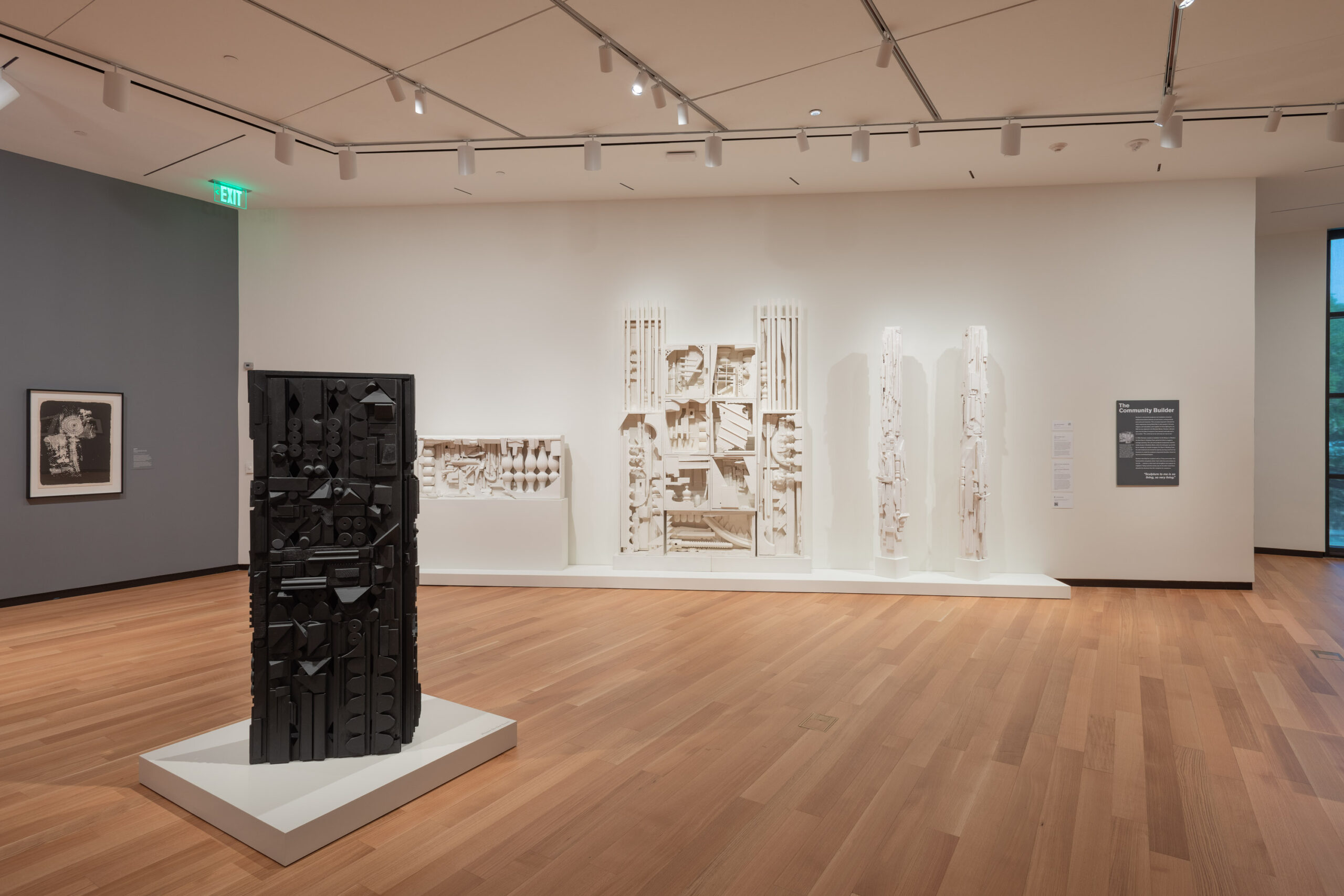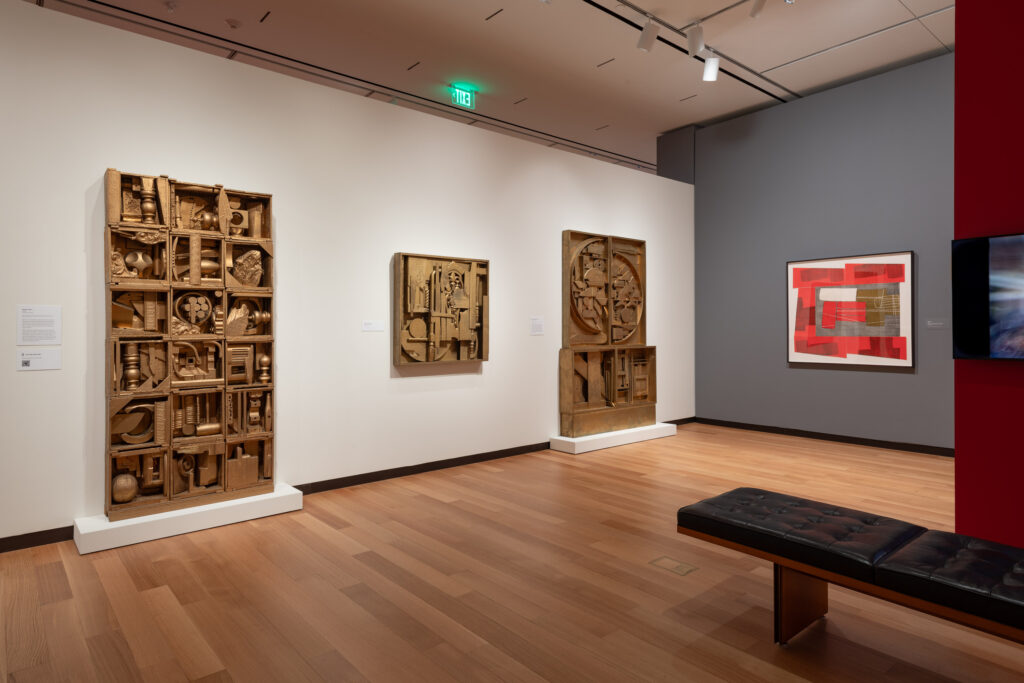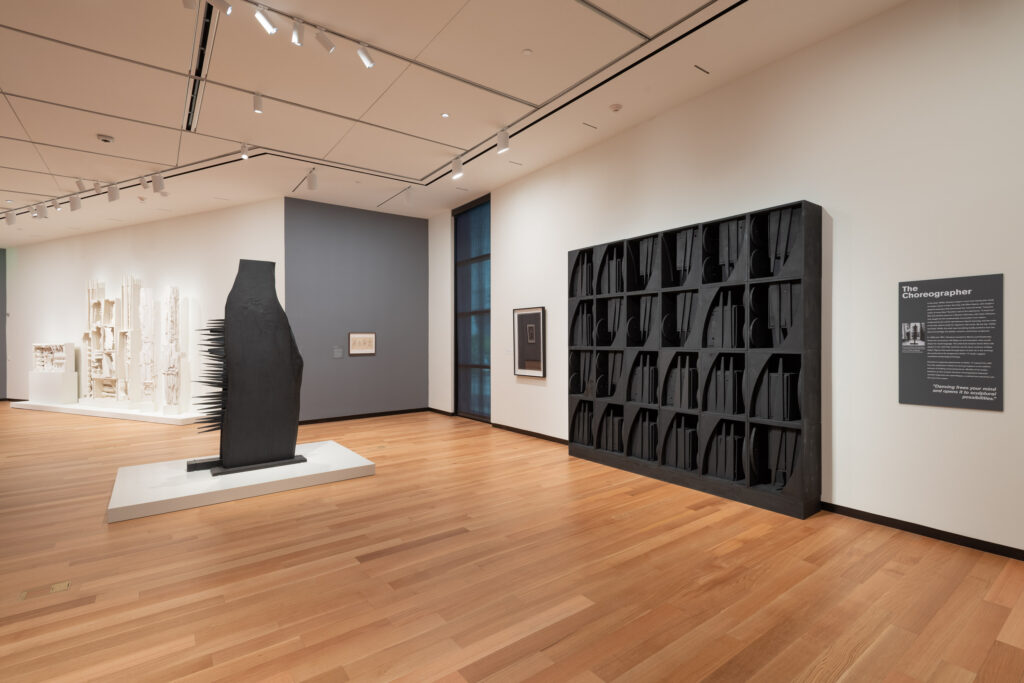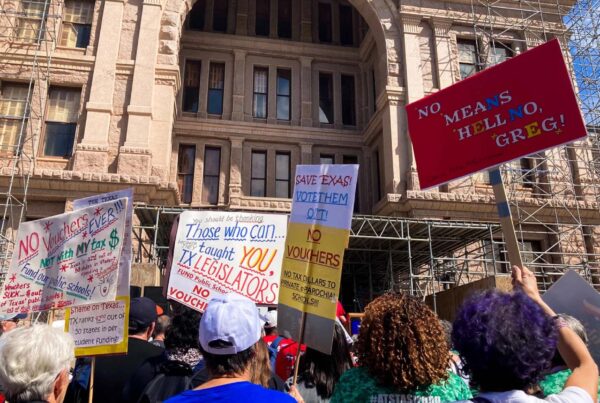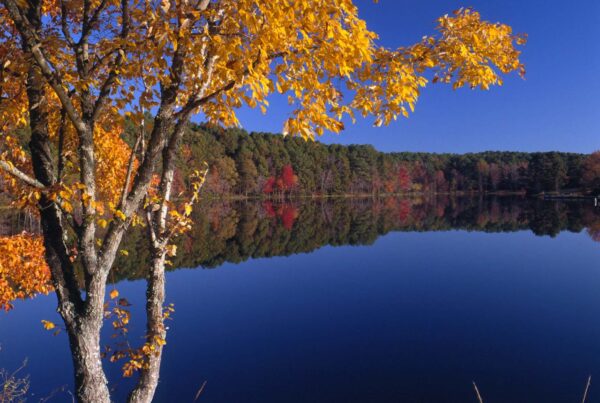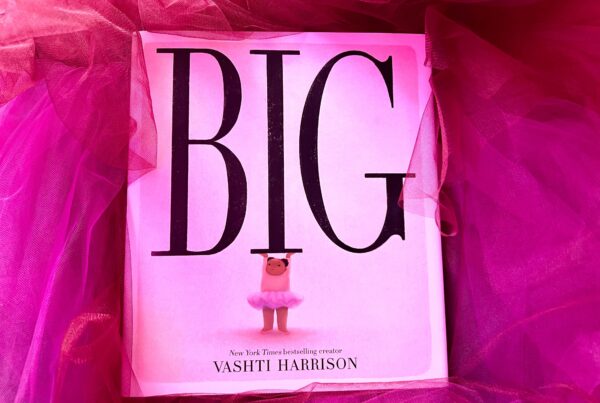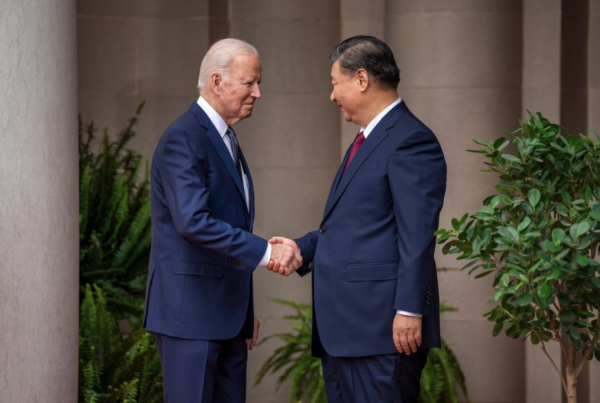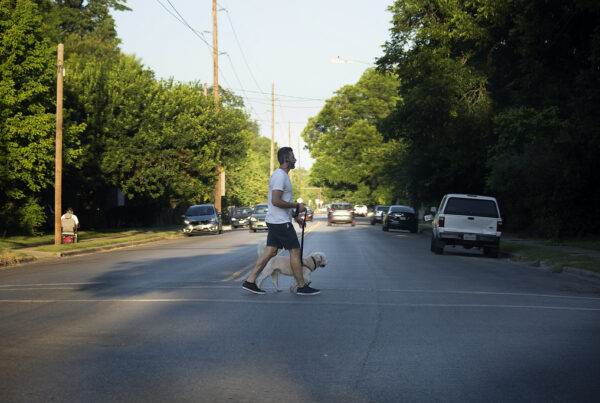Many artists have been inspired by the unique landscapes of Texas: the mountain vistas in the west, coastal shores along the Gulf, the Hill Country’s rolling terrain or the golden glow of the High Plains.
After the sculptor Louise Nevelson traveled to Amarillo in 1960, she began painting her signature wall sculptures in gold – said to be inspired by the old fixtures in ranch houses there. Born in Ukraine and living in New York City at the time, Nevelson traveled to the Panhandle multiple times over the next decade to show her art and teach aspiring artists.
Now, Nevelson’s work is being showcased in an exhibition at the Amon Carter Museum of American Art in Fort Worth: “The World Outside: Louise Nevelson at Midcentury.” Its curator, Shirley Reece-Hughes, says meeting an Amarillo gallerist was the beginning of Nevelson’s connection to Texas. Listen to the interview above or read the transcript below.
This transcript has been edited lightly for clarity:
Texas Standard: Can you give us a description of Louise Nevelson’s artwork? I know it’s sometimes hard to do, but what sort of materials did she work with? What do they generally look like, for someone who hasn’t ever seen them?
Shirley Reece-Hughes: She worked with found wood. She actually took debris from the streets and configured it into fruit and milk crates that were made of wood at the time and then assembled them into wall sculpture. So that’s what she’s known for.
Well, her visit to Amarillo clearly made an impression on her. How did it come about, and why do you think it was so impactful?
She met Dord Fitz, who was a gallerist who went to New York City. He was looking to find artists to bring to Amarillo, to Texas. He met Nevelson. They felt a connection with one another.
And coming to Amarillo, Nevelson really got the support – from patrons, from Dord as gallerists’ support – that she did not receive in New York City. So I think it was a very welcoming place for her. She also enjoyed teaching students and doing workshops, so she was really revived by her contact in Texas.
And that visit to Amarillo changed how she approached her sculptures, sounds like.
Yeah. Reportedly, to her biographer, she said seeing gold on the faucets and so much gold plate inspired her to shift. She had been working primarily in black, and then she experimented with white, and then she shifted to gold.
And part of that was particularly the inspiration of Texas. But Nevelson was also interested in gold as an element and thought about it as the great sun, as she described it.
Was it just the color that changed or shifted in her palette? Or were there other aspects of life in Texas that began to be reflected in her work?
Well, I think that she saw – as Amy Von Lintel and Bonnie Roos bring out in their scholarship on Nevelson and Texas – she saw the Great Plains, and she probably saw the sun coming over the plains. You know, she was born and raised in Maine and then lived in New York City all of her life. So seeing that wide open vista I think inspired her, because Nevelson’s autobiography was called “Dawns and Dusks.”
So you can imagine seeing that dawn in Texas, you know, seeing the dust, seeing that great sun, I think left an impact on her because she thought about the world. That’s why the show’s called “The World Outside.”
In fact, I understand that she began incorporating like rifles into some of her pieces, that kind of thing.
Well, I think there was one gold work that she had incorporated gun shells and pieces, and that was definitely inspired by her contact in Texas. It was short-lived, but I think that definitely spoke to her being in the state and being familiar with her surroundings.
» GET MORE NEWS FROM AROUND THE STATE: Sign up for our weekly ‘Talk of Texas’ newsletter
Obviously there has been scholarship around Louise Nevelson. Could you give us a sense of how big her name is in the wider conversation about sculpture?
You know, she’s one of the most important sculptors of the 20th century, and her legacy sort of waned in the 21st century. I think she didn’t get credit for all that she achieved.
And one thing that the exhibition brings out is the fact that she was really a pioneer of site-specific installations that are so popular today. So many museums commission artists, as the Amon Carter does, to come and install a piece – we did with Leonardo Drew – and Nevelson really started that.
Nevelson also thought about visitors and being involved in her pieces, kind of completing her work, and that was very unique in the 1950s and 60s; there were not a lot of artists thinking about that. So she was really ahead of her time. And this exhibition tries to bring forward all of her nuanced engagement with the world, because often she was portrayed as sort of this isolated recluse which obviously she was not.
Well, tell us more about the exhibition at the Amon Carter. What sort of story did you want to tell about Louise Nevelson?
I wanted to bring out all of her complexities and how engaged she was in different ways in the world. And one of them was she had studied modern dance for over 20 years. So this deeply influenced her work, particularly the sense of movement and the body moving in space.
And so as her sculptures progressed, in fact, moving into gold, part of that was light reflection. She wanted to see how light reflected on the pieces, creating a sense of movement. Also, then she worked with plexiglass and put mirrors – we have those on full view in the exhibition showing how she was always interested in visual perception and sort of changing the way viewers looked at art.
“The World Outside: Louise Nevelson at Midcentury” is on view at the Amon Carter Museum of American Art in Fort Worth through Jan. 7.


